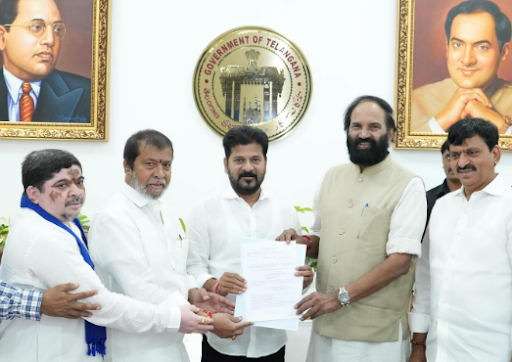





Copyright infringement not intended
Picture Courtesy: https://www.thehindu.com/news/national/19th-edition-of-global-hunger-index-2024/article68746097.ece
India ranks 105th in the Global Hunger Index 2024 with a score of 27.3.
The Global Hunger Index (GHI) 2024 is a comprehensive tool designed to measure and track hunger levels across 127 countries.
The GHI is an annual report. It was established in 2006 to raise awareness about hunger and compare hunger levels between different countries and regions.
Initially published by the International Food Policy Research Institute (IFPRI) and Welthungerhilfe, it later included Concern Worldwide as a co-publisher.
The GHI focuses on multiple dimensions of hunger, including undernourishment, child mortality, and stunted growth in children to rank countries on a scale from 0 to 100, where 0 means no hunger and 100 means the worst hunger possible.

Globally, around 733 million people don’t have enough food daily, and 2.8 billion people can’t afford healthy food.
The worst hunger situations are found in African countries like Sudan and Gaza, where wars have made food shortages even worse. Democratic Republic of the Congo, Haiti, Mali, and Syria are also struggling with food crises due to conflicts and political instability.
The GHI report warns that hunger is still a major problem worldwide, especially in poor countries. Even though governments and organizations have been working hard to fix this, progress is slow. This means the goal of ending hunger by 2030 (part of the United Nations Sustainable Development Goals) is looking very hard to achieve.
|
Mozambique and Nepal made significant strides in reducing hunger and improving their GHI scores since 2016. |
India ranked 105th out of 127 countries, placing it in the "serious" category in the GHI 2024 report.
13.7% of people are not getting adequate food to meet their daily calorie needs.
35.5% of children under five are too short for their age; a sign of chronic undernutrition.
18.7% of children under five are too thin for their height; which shows acute undernutrition.
2.9% of children die before their fifth birthday; due to lack of proper nutrition and unhealthy living conditions.
These numbers are worrying because they show that many people in India, especially young children, aren’t getting the food and nutrients they need to grow and stay healthy.
India is one of the 42 countries in the "serious" category, along with neighbours like Pakistan and Afghanistan. Other South Asian countries like Bangladesh, Nepal, and Sri Lanka are doing better, landing in the "moderate" category of hunger levels.

National Nutrition Mission (or POSHAN Abhiyaan) was launched to reduce stunting, undernutrition, anaemia, and low birth weight in children, pregnant women, and lactating mothers.
The National Food Security Mission (NFSM) was launched to increase the production of rice, wheat, pulses, and other crops.
The Zero Hunger Programme was started to integrate agriculture, health, and nutrition to achieve zero hunger.
Government promoting the fortification of staple foods like rice, wheat flour, and edible oils with essential vitamins and minerals to manage micronutrient deficiencies.
The Public Distribution System (PDS) distributes subsidized food grains to the poor to ensure that no one goes hungry by providing access to essential food items at affordable prices.
The Mid-Day Meal Scheme provides free lunches to school children on working days to improve nutritional levels among children and encourage school attendance.
Integrated Child Development Services (ICDS) provides food, preschool education, and primary healthcare to children under 6 years of age and their mothers to combat malnutrition and promote early childhood development.
Pradhan Mantri Garib Kalyan Anna Yojana (PMGKAY) was launched during the COVID-19 pandemic to provide free food grains to the poor to ensure food security.
The National Food Security Act (NFSA) was enacted in 2013 to provide subsidized food grains to about two-thirds of India’s population. It legally entitles eligible households to receive food grains at highly subsidized prices.
Must Read Articles:
Source:
|
PRACTICE QUESTION Q.Consider the following statements in the context of the Global Hunger Index (GHI): 1. It is released by the World Health Organization. 2. India is ranked above Bangladesh in the Index. Which of the above statements is/are correct? A) 1 only B) 2 only C) Both 1 and 2 D) Neither 1 nor 2 Answer: D Explanation: Statement 1 is incorrect: The GHI is jointly published by Concern Worldwide and Welthungerhilfe. Statement 2 is incorrect: In the 2024 GHI, India is ranked below Bangladesh. This means that Bangladesh has a better (lower) GHI score compared to India. |











© 2025 iasgyan. All right reserved